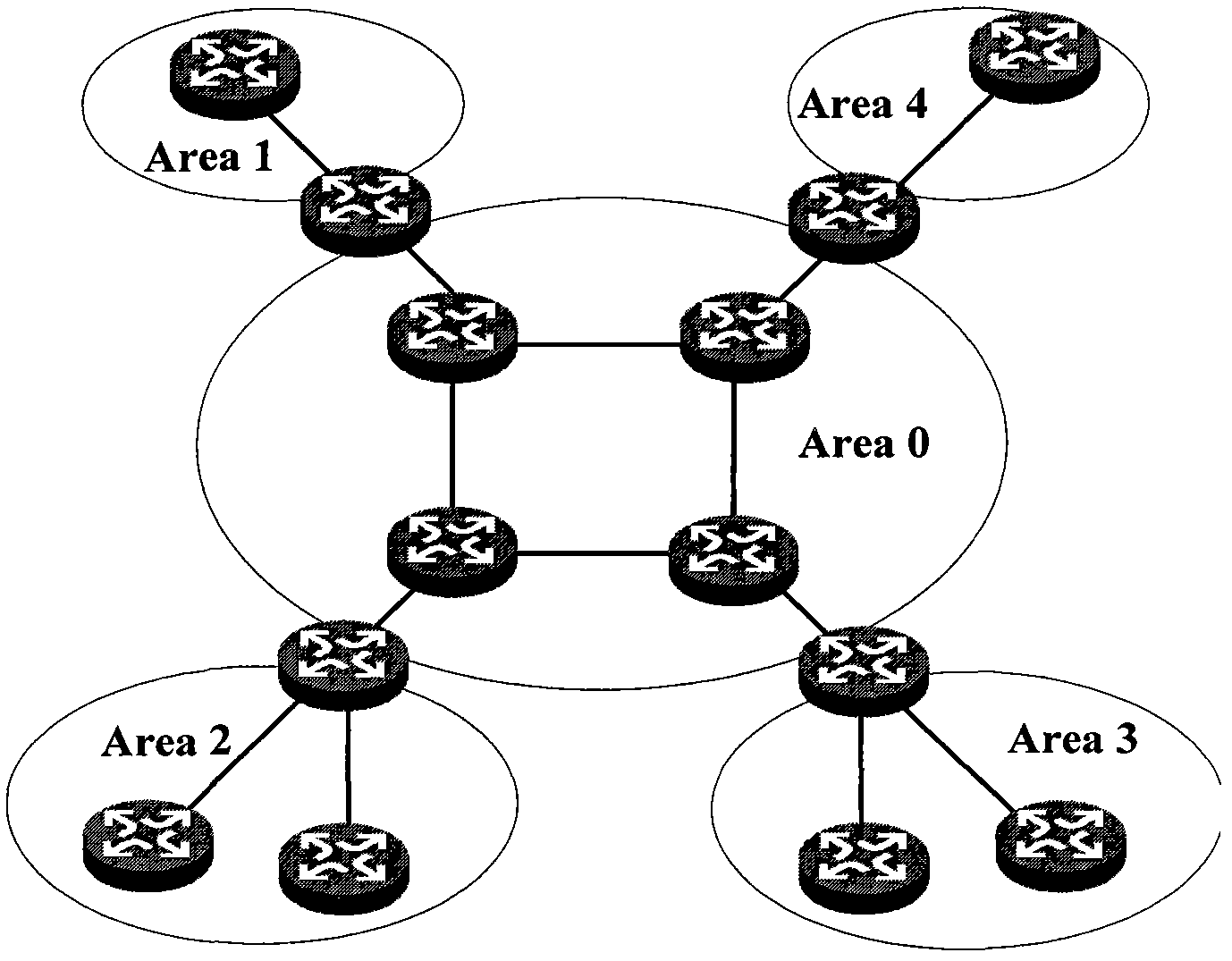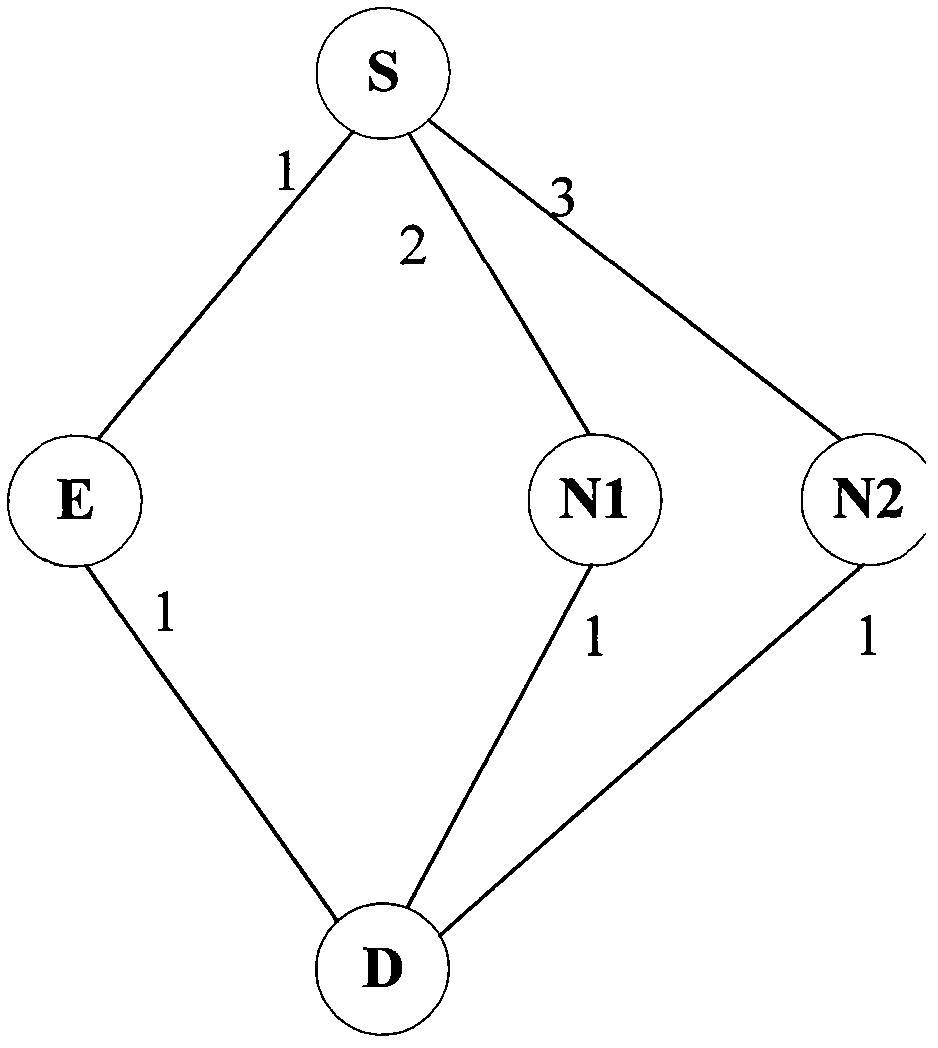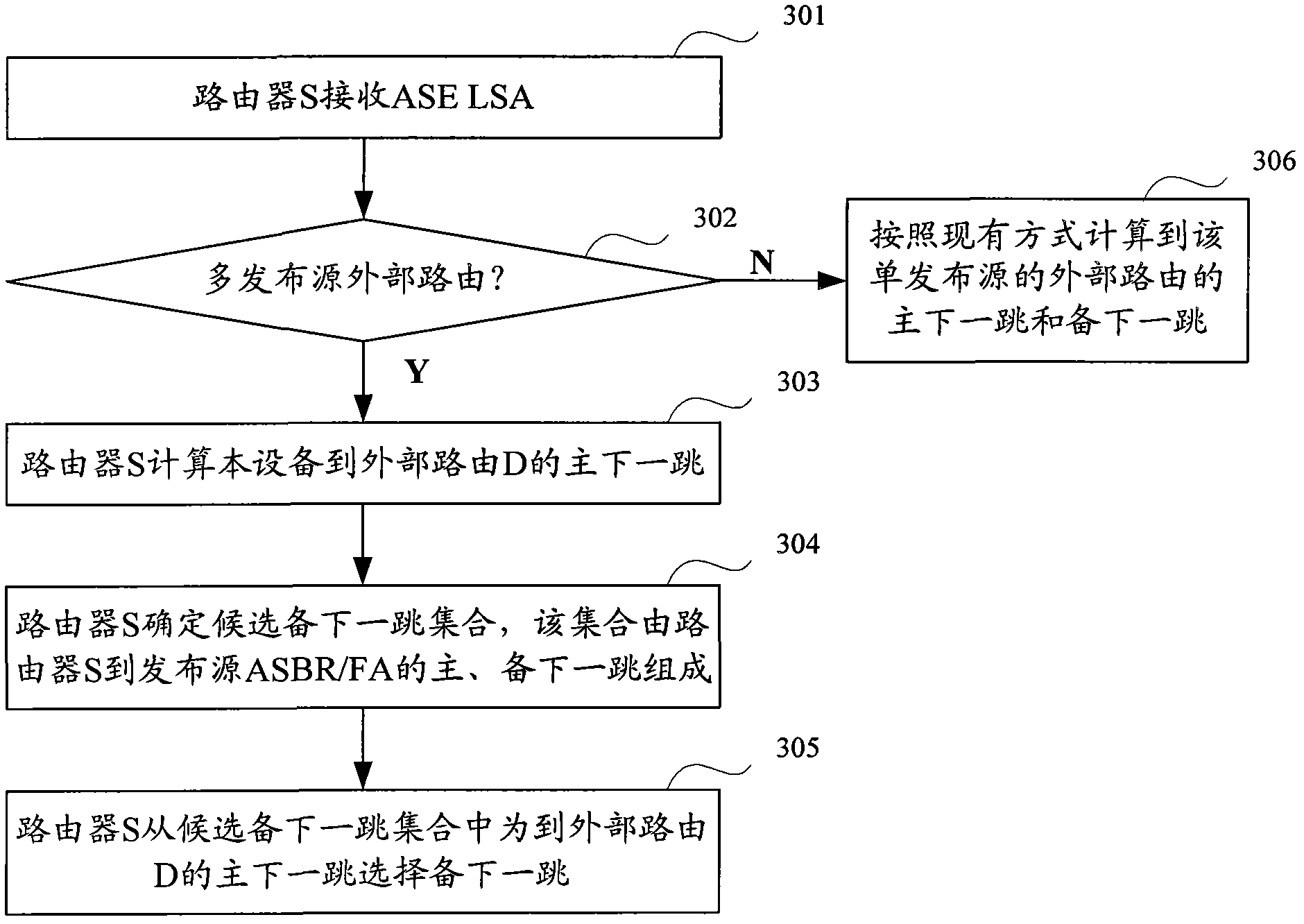Multi-publish-source external routing slave next-hop selection method and equipment
A technology for publishing source and routing, which is applied in the field of communication and can solve problems such as high overhead
- Summary
- Abstract
- Description
- Claims
- Application Information
AI Technical Summary
Problems solved by technology
Method used
Image
Examples
Embodiment Construction
[0024] For the scenario where multiple ASBRs advertise the same external route in the prior art, when the router calculates the backup next hop of the external route, it needs to use all the neighbor routers of the router as candidate backup next hops, which leads to the problem of large calculation overhead. The embodiments of the present invention reduce the selection range of candidate next hops by optimizing the set of candidate next hops of external routes of multiple publishing sources, thereby reducing the amount of calculation, thereby achieving the purpose of accelerating route convergence.
[0025] In the following, an OSPF autonomous system is taken as an example, and the embodiments of the present invention are described in detail with reference to the accompanying drawings.
[0026] In the OSPF autonomous system architecture of the embodiment of the present invention, at least two routers exchange routing information with routers outside the OSPF autonomous system ...
PUM
 Login to View More
Login to View More Abstract
Description
Claims
Application Information
 Login to View More
Login to View More - R&D
- Intellectual Property
- Life Sciences
- Materials
- Tech Scout
- Unparalleled Data Quality
- Higher Quality Content
- 60% Fewer Hallucinations
Browse by: Latest US Patents, China's latest patents, Technical Efficacy Thesaurus, Application Domain, Technology Topic, Popular Technical Reports.
© 2025 PatSnap. All rights reserved.Legal|Privacy policy|Modern Slavery Act Transparency Statement|Sitemap|About US| Contact US: help@patsnap.com



